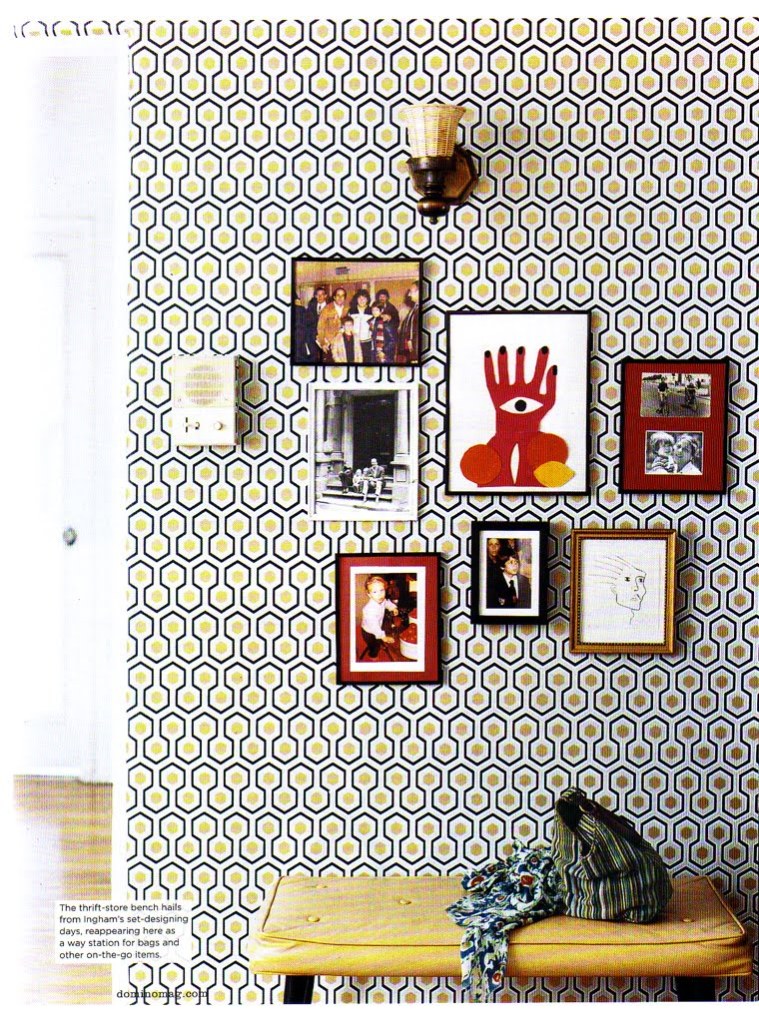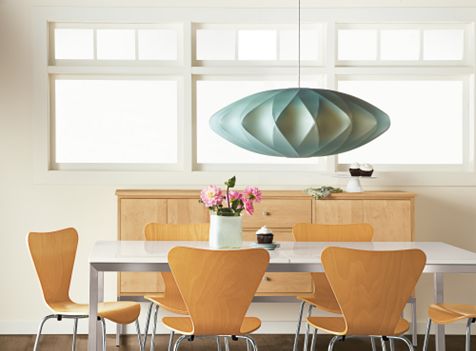Going retro has never been easier. Whether you love ’50s space-age style, ’20s art deco or design from any bygone era, vintage furniture and home accessories are everywhere today.
Flea markets and antique shops are stocked with vintage treasures or trash, depending on your perspective. Yard sale season is in full swing, bringing Naugahyde recliners and vintage Tupperware into the daylight after decades of slumber in attics and garages. And at a slew of websites, from niche marketers to the catchall that is eBay, you can find real vintage pieces and endless reproductions.
But while it’s simple to get your hands on decor from the past, it’s more complicated to use it well.
“Doing retro right is all about balance,” says designer Brian Patrick Flynn, founder of decordemon.com. “If you do everything from the same period, your space can become cliche or kitsch. What you mix retro with is what makes the space unique and updated.”
We asked Flynn, L.A.-based interior designer Betsy Burnham and HGTV’s “Design Star” judge Genevieve Gorder for their favorite retro decorating techniques.
LESS REALLY IS MORE
“If you’re really into the ’50s, don’t do the Formica table, and the jukebox, and an old radio, and five other things,” Burnham says. Instead, choose just one or two evocative pieces. “Not only is it more tasteful, but I think it’s more effective.”
For a client who collects toys and action figures from the ’80s, Burnham designed built-in shelves and suggested displaying only part of the collection at one time. “We found a way to have it enhance the space, and not have the space dictated by it,” she says.
Treasured retro pieces of furniture or art will be ignored if they’re displayed with too many items from the same era. “You won’t notice it until you have something to give it contrast,” Gorder says, so mix favorite vintage items with contemporary pieces. “The juxtaposition between new and old is a beautiful conversation.”
And don’t be misled by books about retro design, says Flynn. “If you look in any design book, you’re going to see a room that’s all packed with things from a certain era,” he says. “But it’s meant as a reference,” not as a template to be replicated.
LIGHT THE WAY
Beyond buying furniture from a given era, you can infuse your home with vintage flair or temper retro furnishings with contemporary style through strategic use of light, pattern, color and texture.
“George Nelson pendants are probably the most iconic form of mid-century pendant lighting, and they mix well with virtually anything,” Flynn says. “Table lamps, especially chrome and ball 1970s style, add a nice element of postmodern sexiness to any room.”
Burnham agrees: “Vintage lighting is fantastic,” she says, but old lampshades should be replaced with fresh ones to “enhance your vintage stuff, make it beautiful again.”
Like lighting, patterns and colors “can act as a bridge between yesterday and today,” Flynn says. “Start off slow with accent pillows or draperies. If you get comfortable with that, move on to wallcovering. A great designer to turn to for geometrics is David Hicks. His prints are still in production today and just as popular now as they were in the 1970s.”
In his own home, Flynn highlighted the house’s mid-century architecture by using 1970s diamond-patterned wallpaper and Nelson pendent lights above the side tables, contrasted with a traditional bed. “The room has a definite retro appeal,” he says, “but it doesn’t feel forced or out-of-the-box.”
He’s also a fan of grasscloth, which can give walls a ’50s or ’70s vibe, and using contemporary color combinations in retro rooms (try black, gray and blue “with pops of Kelly green” for a “swanky, masculine and entertaining-savvy” look, Flynn says).
RESPECT THE ARCHITECTURE
These designers agree that while your home’s interior design doesn’t have to evoke the same era as the exterior, there should be some connection.
“One of my rules is to really understand the architecture and give that value, and take it inside with the interior design,” Burnham says. “But you don’t have to be literal. My house was built in 1927, and obviously I don’t want to have a Victorian interior. I keep it classic, with a twist.”
With a mid-century home, the defining characteristics are a low-slung shape and clean lines. “It’s about the lack of detail,” Gorder says, “so I wouldn’t go all Rococo with my interior pieces.” But, she says, she might use bold vertical stripes to give the illusion that the rooms have more height.
Also consider the size of rooms and the practical uses of the space. For a living-room conversation area, a cluster of ’60s orb chairs might look cool, Gorder says, but what about the acoustics? Seating, whether it be a contemporary sofa or a pair of antique barber chairs, should help guests talk and connect.
RETRO OR REPRO?
Whether original or a reproduction, quality is what matters. Shopping online, it can be hard to determine whether a reproduction is well made or whether a vintage piece is in good condition. Be sure to ask questions.
Shopping for vintage originals can be tough. “It helps to educate yourself,” Burnham says. “Do a little research … (and) your shopping will be so much more effective.”
The final tip? Have fun. These designers says retro decorating is about celebrating styles you love, even if that means just a bit too much kitsch. Whatever era you prefer, Gorder says, “it’s important that you please yourself, because it is the one environment you control.”
Send questions/comments to the editors.




Success. Please wait for the page to reload. If the page does not reload within 5 seconds, please refresh the page.
Enter your email and password to access comments.
Hi, to comment on stories you must . This profile is in addition to your subscription and website login.
Already have a commenting profile? .
Invalid username/password.
Please check your email to confirm and complete your registration.
Only subscribers are eligible to post comments. Please subscribe or login first for digital access. Here’s why.
Use the form below to reset your password. When you've submitted your account email, we will send an email with a reset code.